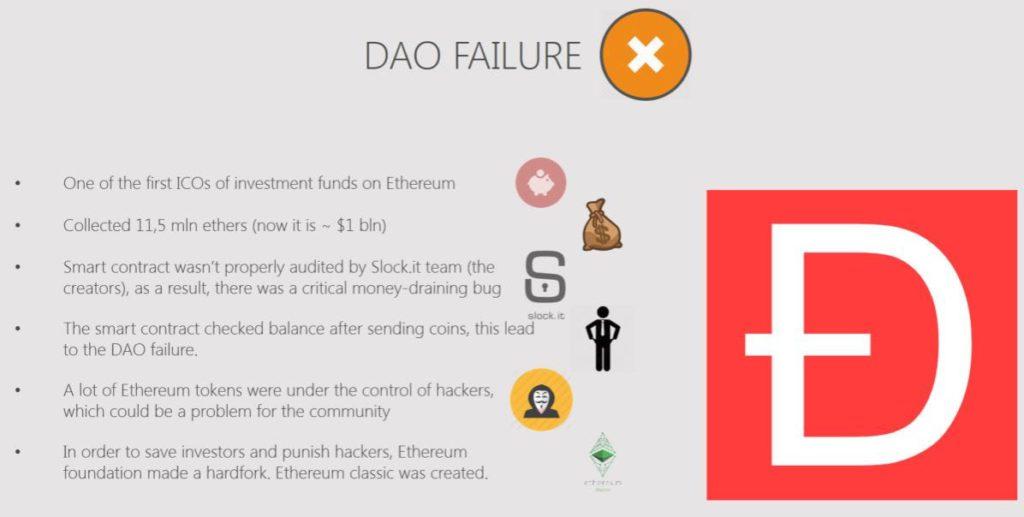Your Ultimate Guide To Sybil Attacks In Decentralization And Top 10 Tips To Mitigate Them

Decentralization is a core principle of blockchain technology, underpinning its promise of security, transparency, and trust. However, it’s not without its vulnerabilities, and one of the most insidious threats to decentralization is the Sybil attack. In this comprehensive guide, we’ll explore what Sybil attacks are, how they undermine decentralization, and the strategies to mitigate their impact.
Understanding Decentralization
At the heart of blockchain technology lies the concept of decentralization. Unlike traditional centralized systems where a single entity has control, blockchain operates on a network of nodes distributed across the globe. Decentralization offers several advantages:
- Resilience: Distributed networks are more resilient to failures and attacks. Even if some nodes go offline or are compromised, the network can continue to function.
- Transparency: Transactions are recorded in a public ledger, accessible to anyone. This transparency builds trust among participants.
- Security: Decentralization reduces the risk of a single point of failure, making it harder for malicious actors to compromise the entire network.
- Trustlessness: Participants in a blockchain network do not need to trust a central authority. Instead, they rely on cryptographic algorithms and network consensus.
Introducing the Sybil Attack
A Sybil attack is a form of attack on a network where an adversary creates multiple fake identities or nodes to gain control or disrupt the network’s consensus. The attack is named after the famous book “Sybil,” which details the life of a woman with multiple personality disorder, reflecting the creation of multiple fake identities.
In a Sybil attack:
- The attacker can create a large number of fake identities that appear to be independent participants in the network.
- These fake identities can manipulate network decisions by casting multiple votes or controlling a significant portion of the network’s resources.
- The attacker’s goal can vary, including subverting network consensus, disrupting operations, or engaging in malicious activities like double-spending in cryptocurrency networks.
Also, read – How to Protect Cryptocurrency From Hackers And How To Report A Cryptocurrency Hack
The Threat to Decentralization
Sybil attacks pose a severe threat to the decentralization of blockchain networks. Here’s how:
- Consensus Manipulation: In proof-of-stake (PoS) or delegated proof-of-stake (DPoS) blockchains, where voting power is tied to the number of tokens held, Sybil attacks can allow attackers to control significant portions of the network. This undermines the consensus mechanism and centralizes decision-making power.
- Distorted Trust: Decentralization relies on trust in a diverse network of participants. A Sybil attacker can introduce fake identities, eroding trust and causing participants to question the authenticity of network participants.
- Resource Exhaustion: In resource-intensive networks, Sybil attacks can strain network resources, slowing down transactions, and potentially making the network unusable for legitimate users.
- Network Partitioning: Sybil attacks can be used to isolate or partition parts of the network, preventing communication and coordination between nodes. This disrupts the functioning of the network.
Mitigating Sybil Attacks
Sybil attacks pose a significant threat to online systems, disrupting trust, fairness, and security. Here are 10 crucial tips to mitigate these attacks and protect your platform:
1. Proof-of-Work (PoW) and Proof-of-Stake (PoS) Consensus Mechanisms:
- These mechanisms require users to expend resources (computation or cryptocurrency) to create new identities, making it costly to generate large numbers of Sybil nodes.
2. Reputation Systems:
- Assign reputation scores based on past behavior and contributions, making it harder for fake accounts to gain influence.
3. Social-Based Verification:
- Require new users to be vouched for by existing trusted members, increasing the cost of creating Sybil nodes.
4. Captcha and Challenge-Response Tests:
- Introduce challenges distinguishable by humans but difficult for automated bots to solve, filtering out Sybil nodes.
5. Rate Limiting and Throttling:
- Limit the number of actions or requests a single user can perform, hindering Sybil nodes from overwhelming the system.
6. IP Address Verification:
- Track and limit accounts associated with the same IP address, preventing mass creation from a single source.
7. Biometric Authentication:
- Implement fingerprint or voice recognition, adding a strong layer of verification beyond traditional passwords.
8. Decentralized Identity Management:
- Explore blockchain-based identity solutions that empower users with control over their data and make it harder for platforms to be manipulated.
9. Machine Learning and Anomaly Detection:
- Utilize machine learning algorithms to identify suspicious activity and flag potential Sybil nodes for further investigation.
10. Community Involvement and Transparency:
- Encourage user reporting of suspicious activity and foster a transparent dialogue about security measures, building trust and collective vigilance.
Remember: Mitigating Sybil attacks requires a multi-layered approach. Combining several of these strategies can significantly strengthen your system’s resilience against malicious actors. Additionally, staying informed about emerging attack vectors and continuously adapting your security measures is crucial.
The top 10 cases of Sybil attacks on decentralization till date:
1. The DAO Hack (2016)
Overview: The DAO was a decentralized autonomous organization on the Ethereum blockchain, designed to enable decentralized decision-making and investments. In 2016, it was hacked for over $60 million. The attacker exploited a vulnerability in the DAO’s smart contract, enabling them to create multiple fake identities and vote to send funds to themselves.

Impact: This attack resulted in a contentious hard fork of the Ethereum blockchain, leading to the creation of Ethereum (ETH) and Ethereum Classic (ETC).
2. The Bitcoin Cash Split (2017)
Overview: The Bitcoin Cash community split into two factions in 2017: Bitcoin Cash (BCH) and Bitcoin Cash SV (BSV). This split was rooted in a disagreement over the block size. BSV supporters wanted to increase it, while BCH supporters wanted to keep it the same. BSV supporters executed a 51% attack on the BCH network, temporarily gaining control and reversing transactions.

Impact: This attack highlighted the potential for blockchain splits based on ideological differences and the vulnerability of networks to 51% attacks.
3. The EOS Hack (2018)
Overview: In 2018, the EOS network suffered a hack that resulted in over $21 million in losses. The attacker exploited a vulnerability in the EOS network, allowing them to create multiple identities and manipulate voting to send funds to themselves.

Impact: The EOS hack raised concerns about the security of delegated proof-of-stake (DPoS) networks and the importance of robust network security.
4. The Binance Hack (2019)
Overview: In 2019, the Binance cryptocurrency exchange was hacked for over $70 million. The attacker exploited a vulnerability in the exchange’s security systems, allowing them to steal over 7,000 Bitcoin.

Impact: This high-profile exchange hack underscored the need for rigorous security measures in cryptocurrency exchanges.
5. The KuCoin Hack (2020)
Overview: In 2020, the KuCoin cryptocurrency exchange was hacked for over $280 million. The attacker exploited a vulnerability in the KuCoin exchange’s systems to steal a variety of cryptocurrencies.

Impact: This attack highlighted the persistent challenges that centralized exchanges face in securing user assets.
6. The DeFi Hacks (2020-2021)
Overview: The rise of decentralized finance (DeFi) protocols in 2020 and 2021 brought about a series of high-profile hacks, resulting in the loss of hundreds of millions of dollars. These hacks often exploited vulnerabilities in smart contracts and other DeFi protocols.
Impact: DeFi hacks raised concerns about the security and auditability of decentralized applications and the need for robust security practices in the DeFi space.
7. The Solana Attack (2022)
Overview: In 2022, the Solana network was attacked for over $5 million. The attacker exploited a vulnerability in the Solana network, enabling them to steal various cryptocurrencies.
Impact: This attack highlighted the vulnerability of even high-performance blockchains like Solana to Sybil attacks and the need for continuous network security improvements.
8. The Nomad Bridge Hack (2022)
Overview: In 2022, the Nomad Bridge, a cross-chain bridge, was hacked for over $190 million. The attacker exploited a vulnerability in the Nomad Bridge to steal a variety of cryptocurrencies.
Impact: Cross-chain bridges are a critical component of blockchain interoperability, and this attack underscored the importance of their security.
9. The Wormhole Bridge Hack (2022)
Overview: In 2022, the Wormhole Bridge, another cross-chain bridge, was hacked for over $325 million. The attacker exploited a vulnerability in the Wormhole Bridge, resulting in the theft of various cryptocurrencies.
Impact: Cross-chain bridges play a crucial role in the blockchain ecosystem, and their vulnerabilities can have far-reaching consequences.
10. The Ronin Bridge Hack (2022)
Overview: In 2022, the Ronin Bridge, a cross-chain bridge, was hacked for over $620 million. The attacker exploited a vulnerability in the Ronin Bridge, leading to the theft of various cryptocurrencies.
Impact: The Ronin Bridge hack highlighted the substantial value at stake in the blockchain space and the need for enhanced security measures in the cross-chain ecosystem.
E13: Web3 Security: A History of Exploits and Black Hat Tactics
We explain:
– Mt Gox hack, The DAO hack
– Mango Markets, Beanstalk, CREAM
– BNB, Harmony, Ronin Bridge hacks
– How @kevinrose got phished
– How we got hacked!🔊: https://t.co/1cCrmtXQ2G
📺: https://t.co/AZvZQhbJoq pic.twitter.com/lOEI6TOIow— Good Game (@goodgamepodxyz) March 14, 2023
Conclusion
Sybil attacks represent a significant challenge to the decentralization of blockchain networks, undermining the security, transparency, and trust they promise. However, through robust consensus mechanisms, identity verification, and Sybil detection, the blockchain community continues to develop innovative solutions to combat this threat. By staying vigilant and proactive, we can ensure that decentralization remains a cornerstone of blockchain technology, empowering individuals with control over their digital interactions.




























































